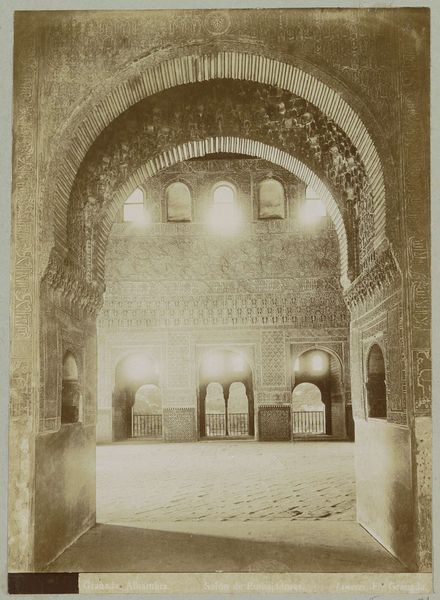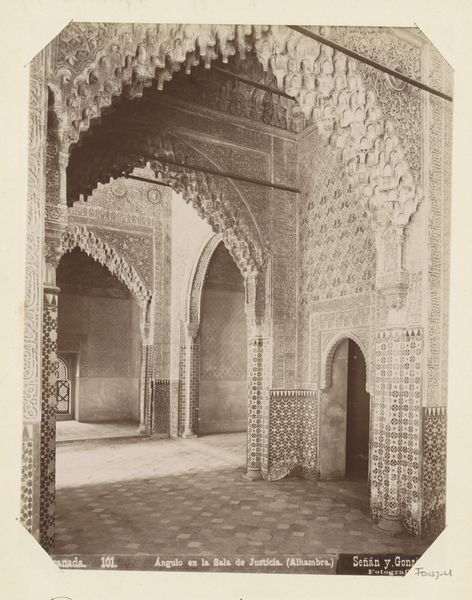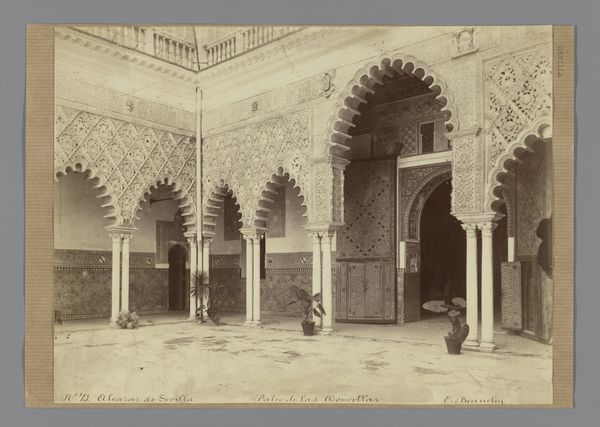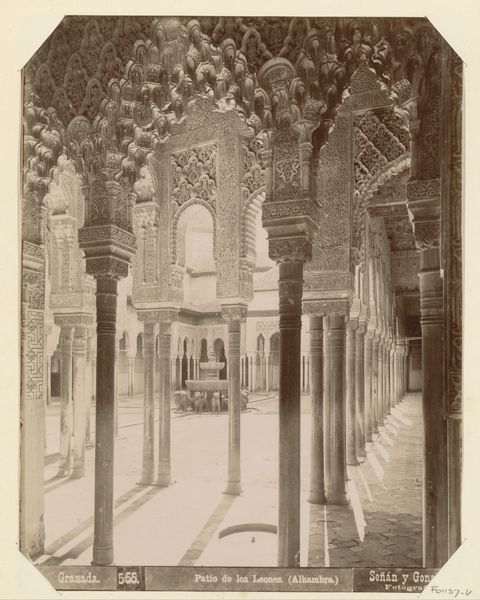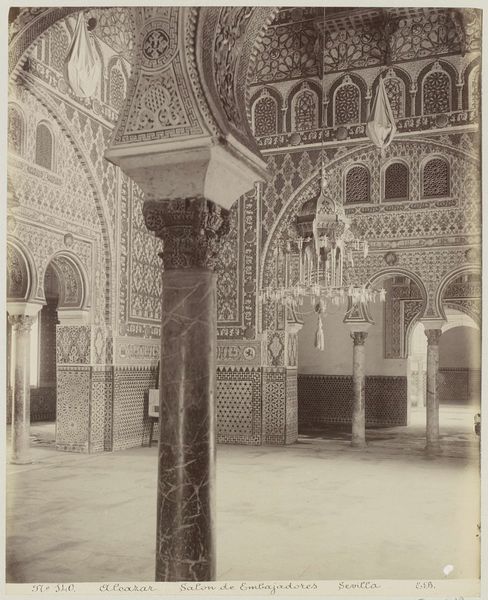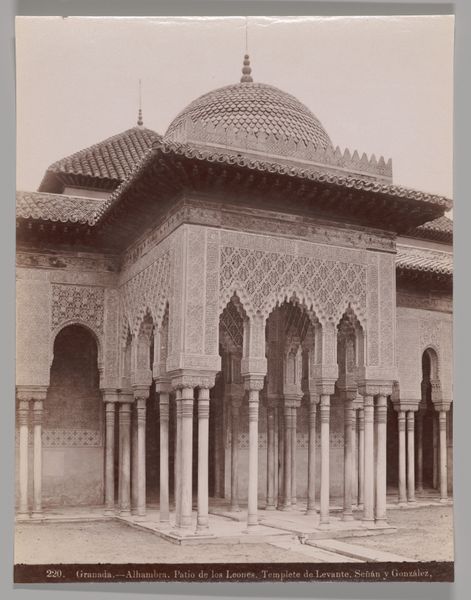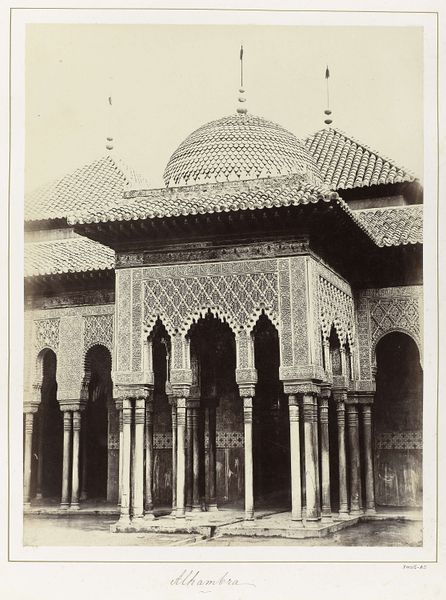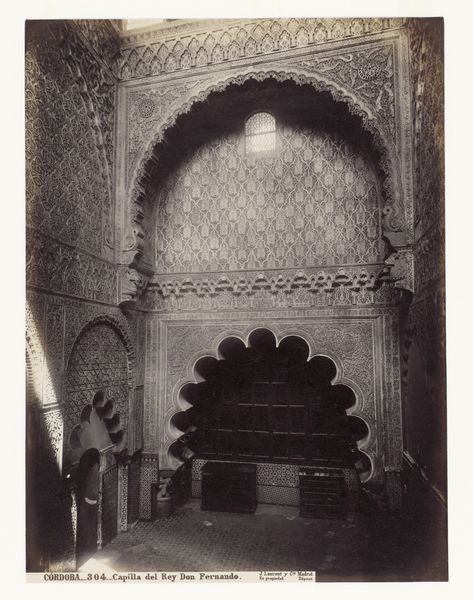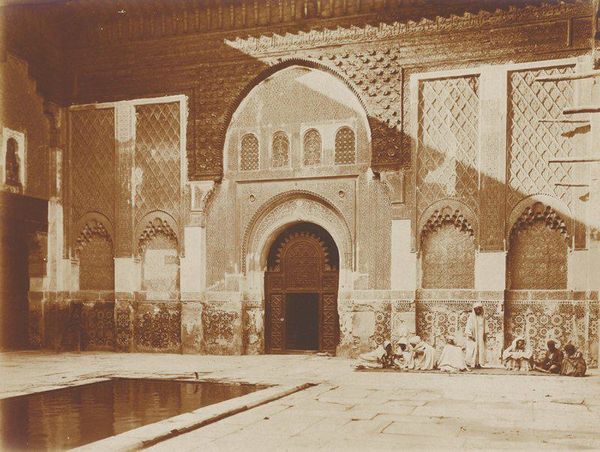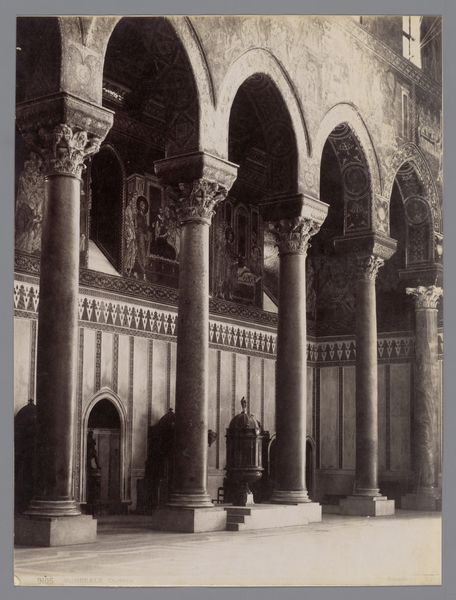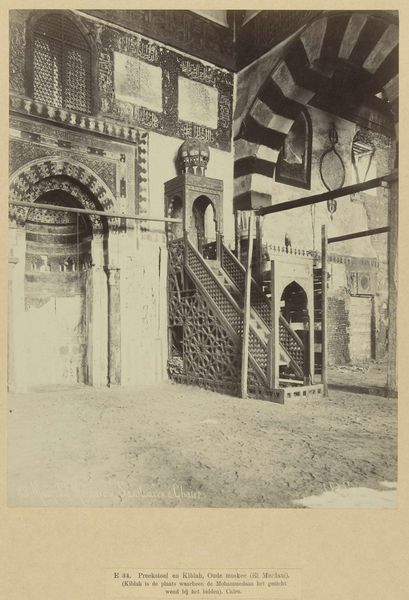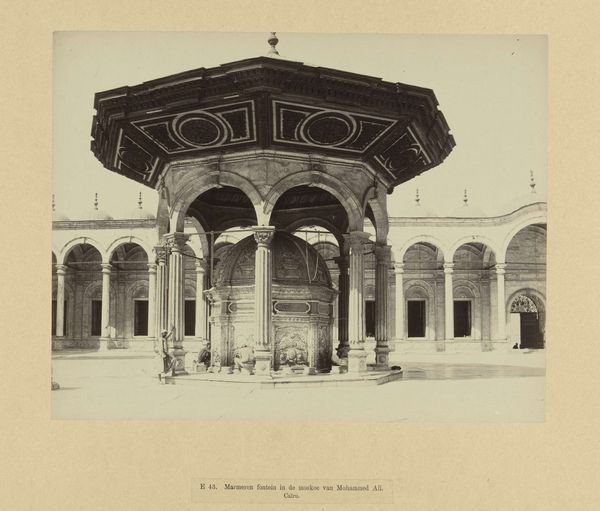
print, photography
# print
#
photography
#
ancient-mediterranean
#
19th century
#
islamic-art
Dimensions: height 278 mm, width 215 mm
Copyright: Rijks Museum: Open Domain
Curator: This image, taken before 1893, depicts the Salón de Embajadores, or Hall of Ambassadors, within the Alcázar of Seville. Editor: My first impression is one of overwhelming detail, yet there’s also a certain quietude. The symmetry and repetition are striking, almost meditative. It feels…heavy with history. Curator: Indeed. It's crucial to recognize that the Alcázar embodies a complex layering of histories. Built by the Moorish rulers of Seville, it underwent significant alterations by later Christian monarchs. This photograph captures that tension, presenting an architectural space where Islamic artistry met, and was reshaped by, European power. Think about how photographic representation itself, as a technology, intersected with colonial power. Editor: So the photographer, by capturing this hybrid space, is also implicated in that power dynamic? Is there a suggestion that such photographic works reified existing colonial agendas? Curator: Precisely. The Salón wasn’t simply a meeting place; it was a stage upon which negotiations of power were conducted. Look at the walls - an inscription celebrates God, and the tiles may invoke pre-Christian goddesses from antiquity, speaking to an array of potential audiences. Editor: That's a strong point. I see those patterns and consider how ornament functions in this space, speaking to notions of wealth and control, but also potentially holding more elusive symbolic meanings for diverse cultural audiences. The perspective of the image also encourages certain understandings; those arches imply looking out on a conquered population. Curator: It certainly directs our gaze and therefore affects how we situate ourselves within this space. This wasn’t simply a passive record but an active interpretation, designed to underscore a particular political narrative. We need to understand it within that frame, both architecturally and photographically. Editor: Seeing it this way makes me realize the photograph's own subtle manipulations and intended effect, encouraging critical dialogue about its purpose. Curator: Absolutely. The history is embedded and revealed to us as much as possible within this fascinating historical moment.
Comments
No comments
Be the first to comment and join the conversation on the ultimate creative platform.
